- Home
- Storing Firewood
Storing Firewood
This post may contain affiliate links so I earn a commission.
When storing firewood it's important to choose the correct storage method to protect your hard work and investment.
You've spent all day, week, or even month cutting your firewood for the season.
The last thing you want to do is throw it into a big pile and expect it to be ready for winter.
Lets face it, mother nature can be very demanding.
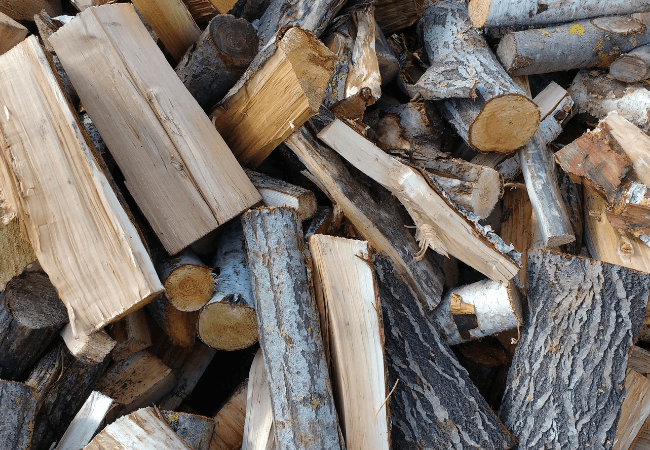
Wood in particular is very susceptible to the elements like rain and snow.
Improperly stored wood could lead to wet, unseasoned firewood that's prone to decay.
Plus, a big ole pile of wood looks pretty appealing to all sorts of animals and bugs who are looking for a place to hide......not exactly what you want.
If you encounter unwanted animals or pests living in your woodpile, you can learn how to remove them by visiting trap-anything.com.
How To Prevent Mold And Decay
Firewood that comes into contact with the ground is exposed to moisture and insects which increases the rate of decay.
Over time, this wood will become nearly useless.
Moisture also increases the odds of mold growing on your firewood. Read here to learn about burning moldy firewood.
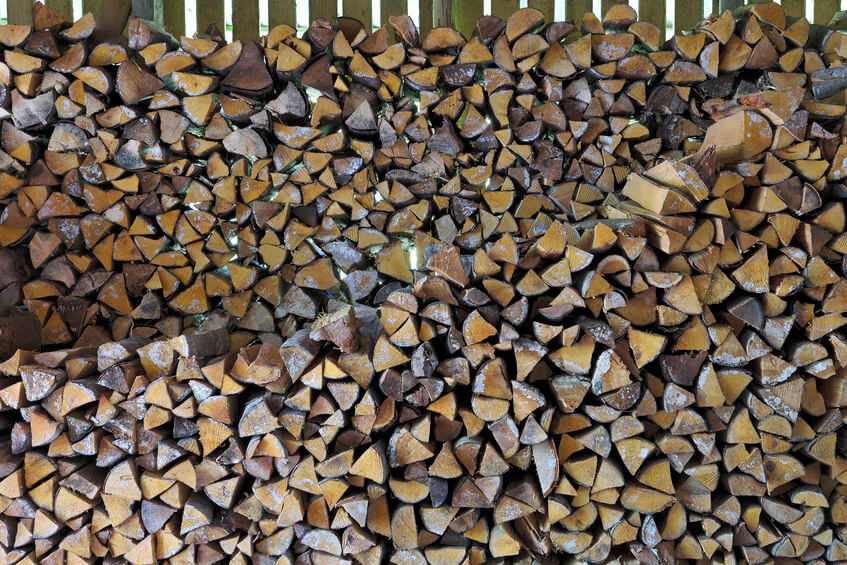 Moldy Firewood
Moldy FirewoodHave you ever thought about stacking firewood between the trees in your yard or fence line instead of using T posts or stacked wood as bookends to brace the ends of your woodpile?
The trees make an easy end support, but if you don't follow a few simple rules you can damage and even kill the support trees.
If you're interested in stacking wood using this method make sure you read this article about stacking firewood between trees to make sure you don't damage or kill the support trees.
Or, if you have some old pallets laying around, check out this article that explains tips and techniques for stacking firewood on pallets.
I love using pallets because they're easy to find and they create the perfect floor for storing firewood.
They work really well because they create a level base to stack your wood on, plus they allow airflow to circulate around the wood.
Pallets also work great for building a floor inside a firewood shed. If you're interested in building a shed, trying using these free firewood shed plans.
Where To Begin?
Before storing firewood you should first understand how to stack the wood, ensuring it's drying as quickly as possible.
Properly stacked firewood will last a lot longer than a random pile in the middle of your yard. Click here to learn how to stack firewood.
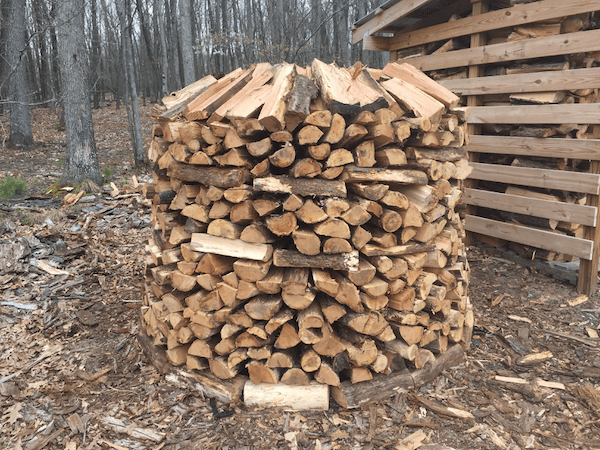 Holz Hausen Firewood Stack
Holz Hausen Firewood StackOne very popular European method of stacking wood is called the Holz Hausen.
Believed to be invented by the Germans, this round stacking technique is very sturdy, it holds a lot of wood.....and it looks AMAZING!
Storage Options
When storing your firewood you must think into the future.
You want an area that's not intrusive to your yard, but close to your house or wood furnace.
Carrying firewood everyday to your house or wood furnace is time consuming and labor intensive.
Since most firewood logs are heavy and bulky, several trips usually have to be made.
Do yourself a favor and store your firewood in the closest practical location to your heating device.
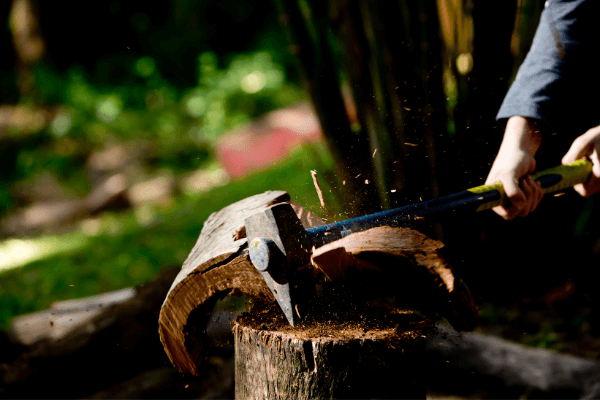
You will thank yourself for it later.
You can also use a log carrier to make transporting split firewood easier.
The carrier allows you to move several pieces of firewood at once, plus it prevents bark, snow or other debris from falling on your living room floor. To learn more read our Mountain Log Carrier Review.
Another great option is to build a homemade outdoor firewood storage rack.
I built a homemade firewood storage rack out of some treated 2x4's I had left over from another project. Click on the link to see the firewood rack plans or to make things even easier you can download our firewood rack assembly instructions.
Need more ideas for storing firewood?
Firewood rack brackets can also be used to build an adjustable firewood rack. They make building a strong, stable firewood rack quick and easy.
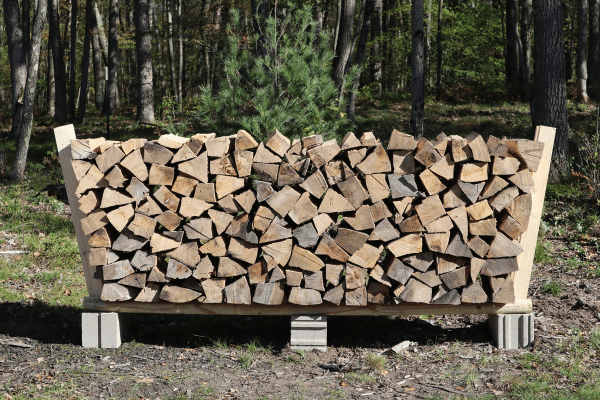
You can also build your own DIY cinder block firewood rack that doesn't require any tools and only takes about 5 minutes to make!
I made one of these firewood racks this year and I was amazed how easy it was to construct.
Plus, the supplies are very affordable.
Additional Ways To Store Your Firewood And Keep It Dry
The following links describe practical options for storing firewood and keeping it dry. Click on one to learn more about the device and see if it works for you.
Firewood Covers
Firewood covers can come in several different shapes and options.
One of the most popular ways to cover your firewood is to simply use a blue tarp that's staked or tied down on the corners to prevent it from blowing away.
I've also used scrap sheets of plywood, old rubber, tin roofing and anything else that you can lay across the top of a firewood stack to repel rain and snow.
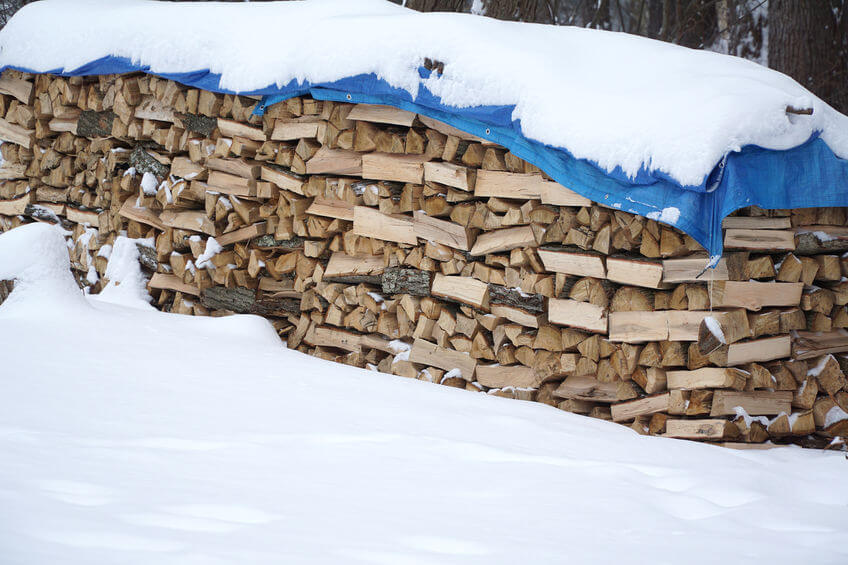
Just remember, no matter which option you choose, you only want to cover the top 1/3 portion of the firewood stack.
By allowing the sides to remain uncovered, the sun and wind can penetrate the stack allowing it to dry without trapping moisture inside the cover.
If you completely cover your wet firewood with a tarp, there's a good chance the firewood will develop mold because the moisture was not able to escape.
Firewood Storage Shed
Using a firewood storage shed to season firewood is probably my number one choice when it comes to keeping my firewood dry.
There's a lot of great ways to build a shed that will fit perfectly on your property, and although they're going to cost considerably more than a blue tarp, they'll last for many years.
I like using a shed, also commonly called a firewood crib, because I can stack my firewood in it in the early spring and by the time winter arrives, the sheltered wood is dry and ready to burn.
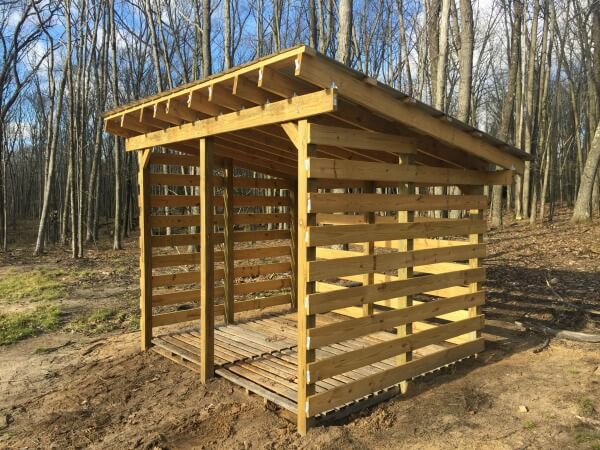
Utilizing slatted sides that allows wind to penetrate the stack from every angle, a steel roof to shed rain and snow, and an elevated floor made out of pallets to decrease insects creates a great environment for storing firewood.
Firewood Box For Storing Firewood
A firewood box is a great place to store your dry firewood after you bring it closer to your house and prepare to load your wood stove.
A box works really well as a staging point.
It serves as a storage container where you can bring up a days worth of firewood and keep it near your wood stove so you're not constantly walking outside to your main firewood storage area.
A firewood box can either be homemade or you can also utilize premade boxes, like a deck box with a lid.
A deck box works really well for storing dry firewood because they're lightweight (which makes them easy to move in the summer when not in use) and they come equipped with a lid which keeps rain and snow off your dry firewood.
Just remember, you should only store dry firewood inside a box. They're not intended for wet wood.
Why Should You Season Firewood?
Properly seasoned firewood burns hotter, lights easier and is safer to use due to the low moisture content.
When you attempt to burn wet wood, you'll notice that it smolders, hisses and just does not want to burn.
This is because all of the heat and energy is being used to evaporate the moisture out of the wood before it can effectively burn.
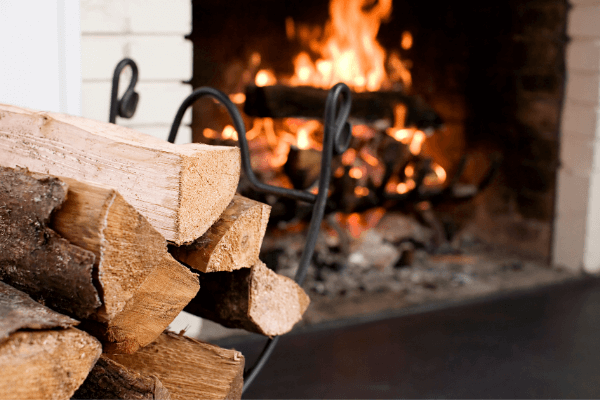
As these unburnt gasses rise up your cold chimney they have the potential to adhere to the interior walls, creating creosote.
The easiest way to prevent creosote in your chimney is to burn dry, seasoned firewood. Click here to learn how to season firewood.
Storing Firewood - Overall
There's a lot of different options for storing firewood to ensure it's ready to burn when you need it.
Is there one single best way to cover or store your firewood?
No, it really depends on how much room you have in your lawn, how much firewood you need to store and how often you intend on using it.
Not everyone will have the space for a full sized firewood shed, but you can easily use a tarp or firewood cover to keep your wood dry.
Consider all of your different options for storing firewood and choose a method that works best for you and you'll find building a fire with dry firewood will make the process safer and much more enjoyable!

About the Author
Obsessed with firewood, Nick is behind over 350+ of Firewood For Life's articles, as well as countless reviews, guides and YouTube videos to help readers like you reduce heating costs and create the perfect fire.


